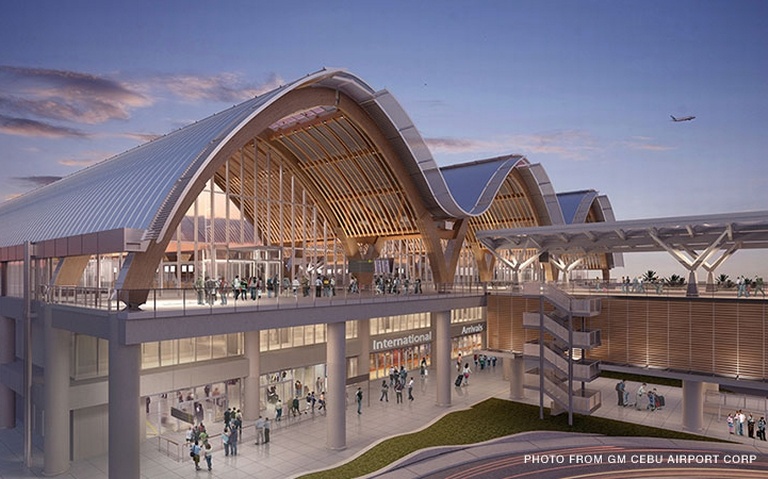The Philippines is set to showcase a world-class airport terminal in one of the country’s major gateways. Terminal 2 of the Mactan-Cebu International Airport (MCIA), touted as the Philippines’ first “resort airport,” will be inaugurated on June 7 and commercial operations are scheduled to begin on July 1.
Spanning 65,500 square meters, MCIA Terminal 2 is a three-story building expected to handle around eight million passengers a year .
Designed by Hong-Kong based architecture firm Integrated Design Associates Ltd., which specializes in “green,” environment-friendly designs, terminal 2’s interior was designed by world-renowned Filipino architects and designers Kenneth Cobonpue, Budji Layug and Royal Pineda.
Even before its opening, the new airport terminal’s unique and sleek design is already winning admiration from all over the world. It has received numerous awards for its architecture such as the Kohler Bold Design Award for Innovation in 2017.
The terminal’s sleek, eye-catching design aims to elevate the airport from a gateway to a tourist destination. Its most notable feature is its arched roof, which is said to be inspired by the waves of the seas surrounding Mactan Island. Each arch is 30 meters wide and 15 meters tall. The structure of the roof is made of glulam wood, a natural material that highlights the resort aesthetic of the airport .
The roof’s architecture will regulate the temperature within the building while still allowing a sufficient amount of sunlight to come in throughout the day.
MCIA Terminal 2 aims not only to improve the services of the country’s second largest airport by passenger volume, but also to promote Cebu as a top tourist destination in the Philippines.
There will be 48 check-in counters expandable to 72.
Each counter is designed with rattan and is back-lighted to make it look like lanterns. It has provisions for seven passenger boarding bridges which can be expanded to 12.
The entire terminal is also equipped with 12 escalators and 15 elevators.
A car parking facility will be available that can accommodate 550 cars and expandable to 750 cars.
Another feature of the terminal is an automatic tray return system (ATRS) which will automatically return empty trays for passengers to put their bags, ending the hassle to look for one.
It was built by a consortium composed of Philippine construction company Megawide Construction Corp. and India-based GMR Infrastructure Ltd., operator of the Delhi International Airport and the Hyderabad International Airport in India.











